
Throwies
Throwies is a generative algorithm I discovered while working on a commission for the Bollag-Miller Claytons. Inspired by graffiti throw-ups, it transforms simple sine waves into sculptural forms that capture the bold, bulbous aesthetic of street art. These overlapping, undulating shapes swell and fold into one another, mimicking the stylized letters of throw-ups that balloon outward with exaggerated volume. The algorithm combines precise computational control with parameters that introduce controlled variation, producing unique yet recognizable forms that balance between geometric abstraction and urban expressionism.
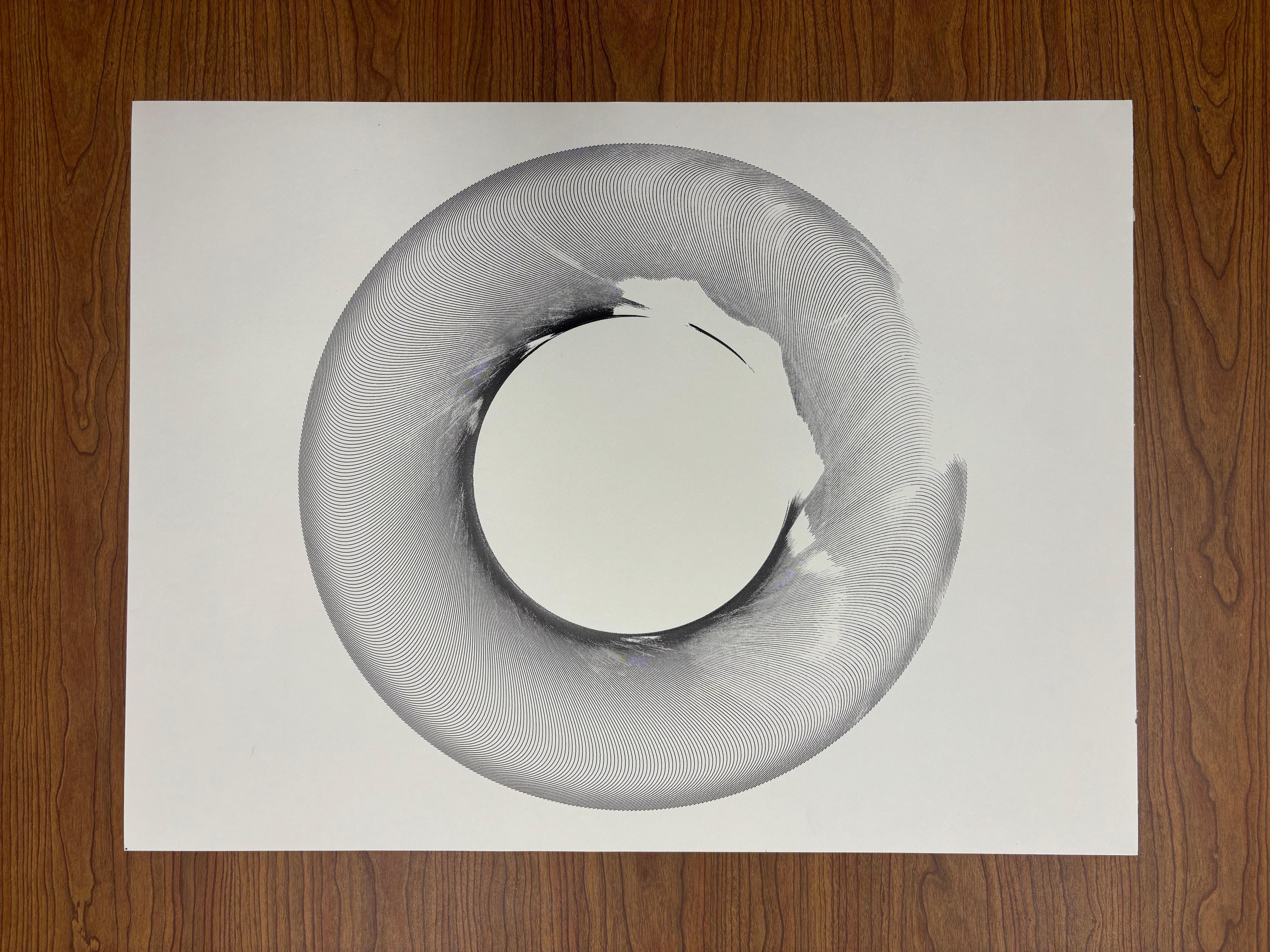
Repetition as Prayer
Repetition as Prayer is a show exploring the role of the individual in creating systems and community. The power of prayer emerges not from its individual utterance but from its collective practice. These works investigate the hopeful persistence of repetition—the faith that our individual gestures, however small, contribute to a larger pattern of meaning when performed in concert with others.

Tracing Harmony
Tracing Harmony is a series of generative drawings. Each piece is the output of a single algorithm mimicking a harmonograph, a drawing machine that uses pendulums to capture fragments of nature's continuous oscillation. This series is a dance between the physical and digital. A physical machine turned digital only to be retransmitted back into the physical world. The hand of the machine being pulled by imaginary pendulums at random. The hand of the artist guiding the randomness and curating the outputs.
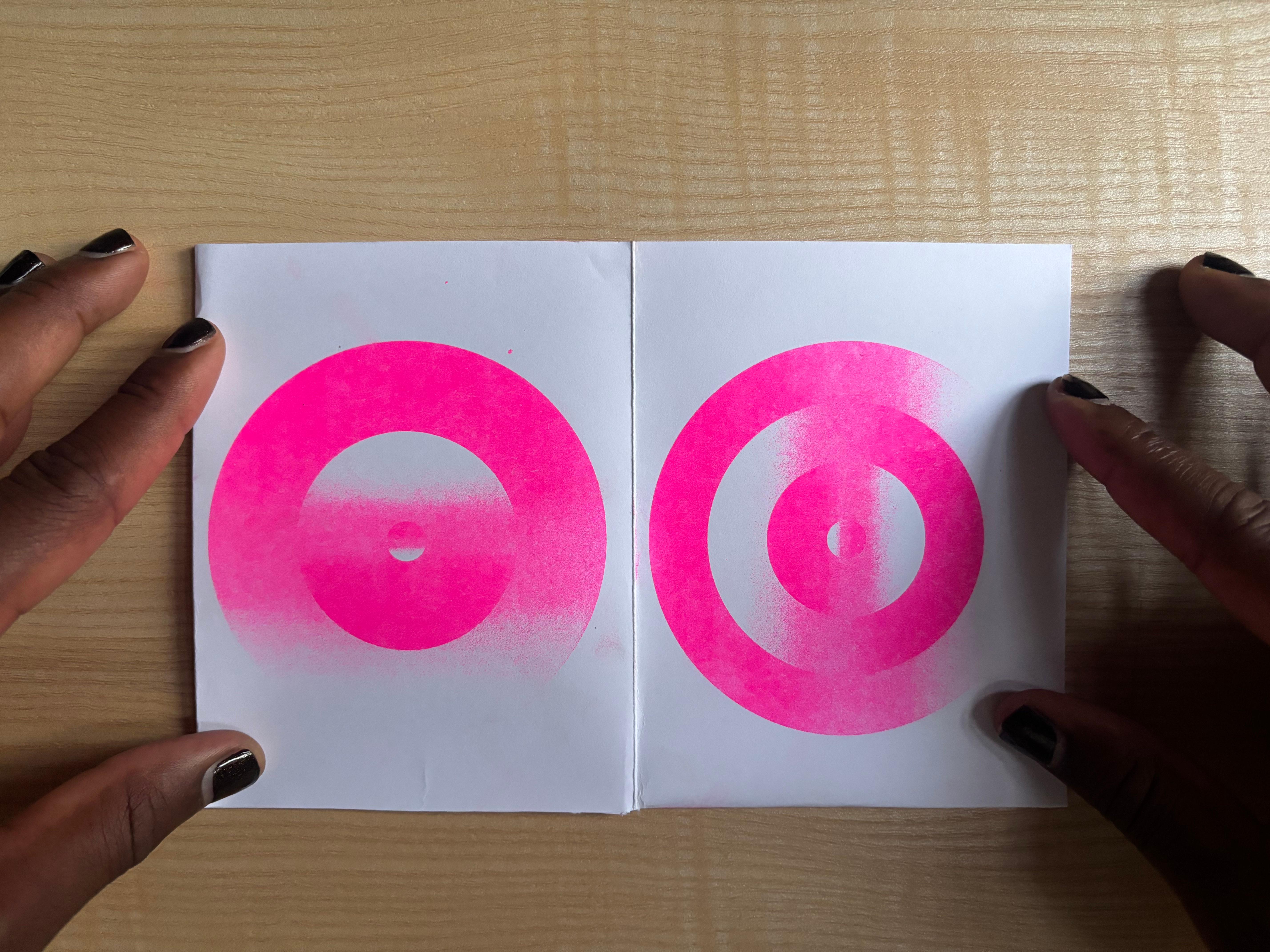
Maze Zine
This artist book is a generative system where the physical act of turning pages creates a viewing rhythm as you understand each output. Using the magic fold technique (where a single sheet becomes an 8-page booklet), I printed different outputs from the same algorithmic script on each section. Because of its magic-zine fold, you can cut and refold the sheet in different sequences, letting readers create their own paths through the variations.
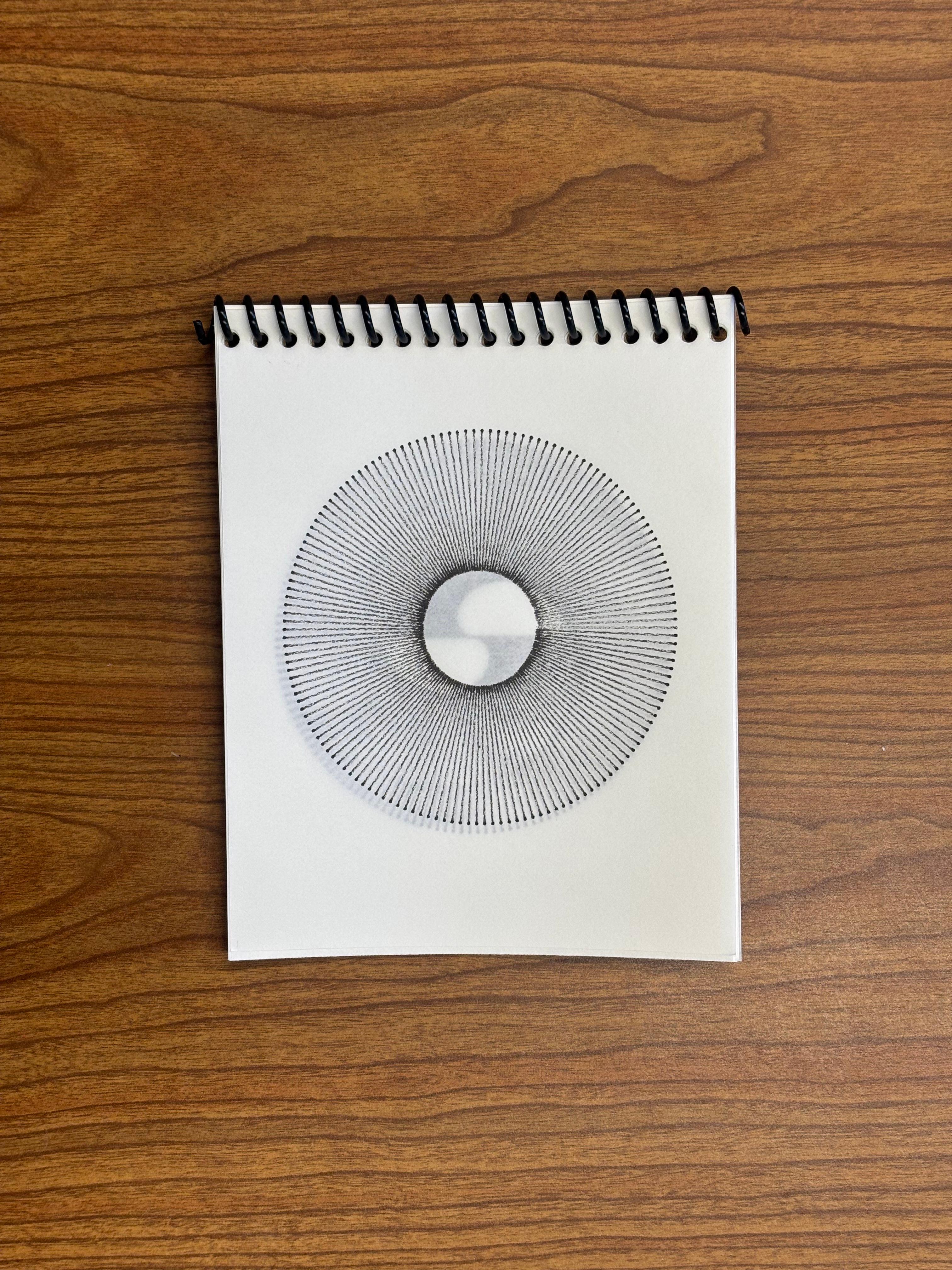
Revelations
An artist book exploring transparency and accumulation. Each page is plotted on translucent vellum, allowing previous images to ghost through subsequent ones. Every page answers the question: how can I draw lines rotating around a center point? Each turn reveals a new answer while past pages layer beneath, creating unexpected compositions through overlap. The transparent paper adds its own texture, a subtle static between the plotted line and the physical material.

Minipix
Minipix is a generative art tool that turns photographs into collages through algorithmic rendering. Upload a photo and scroll through variations generated by six internal algorithms. Each photograph becomes source material for near-infinite rearrangements, exploring what emerges when pixels are systematically reorganized rather than generated from scratch. Image source: Anselm Feuerbach, Peonies (1880s)
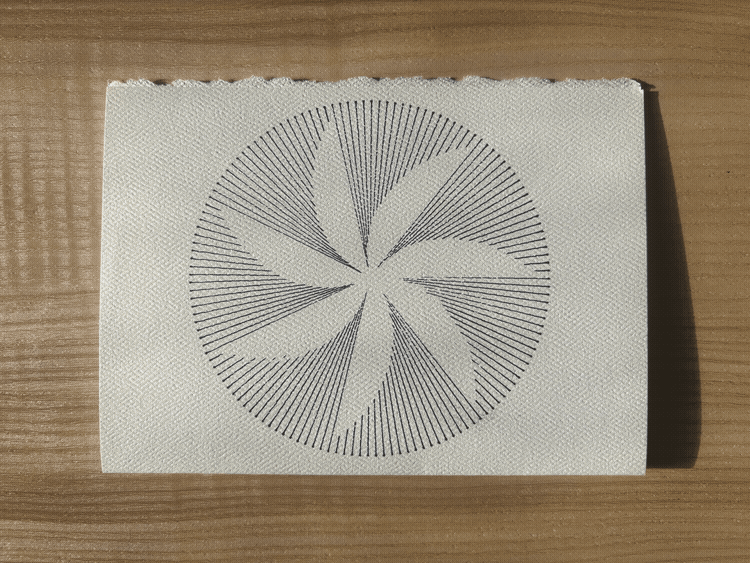
Closer by the mile
A pen plotter animation made as a thank you for supporters of my Pan-Mass Challenge ride. The PMC is a fundraising bike ride for cancer research, and this piece reflects its spirit: individual efforts accumulating into something larger. Each frame exists as a physical drawing made by a plotting machine, then sequenced into animation. Like riders contributing miles toward a shared goal, each plotted line builds the whole.
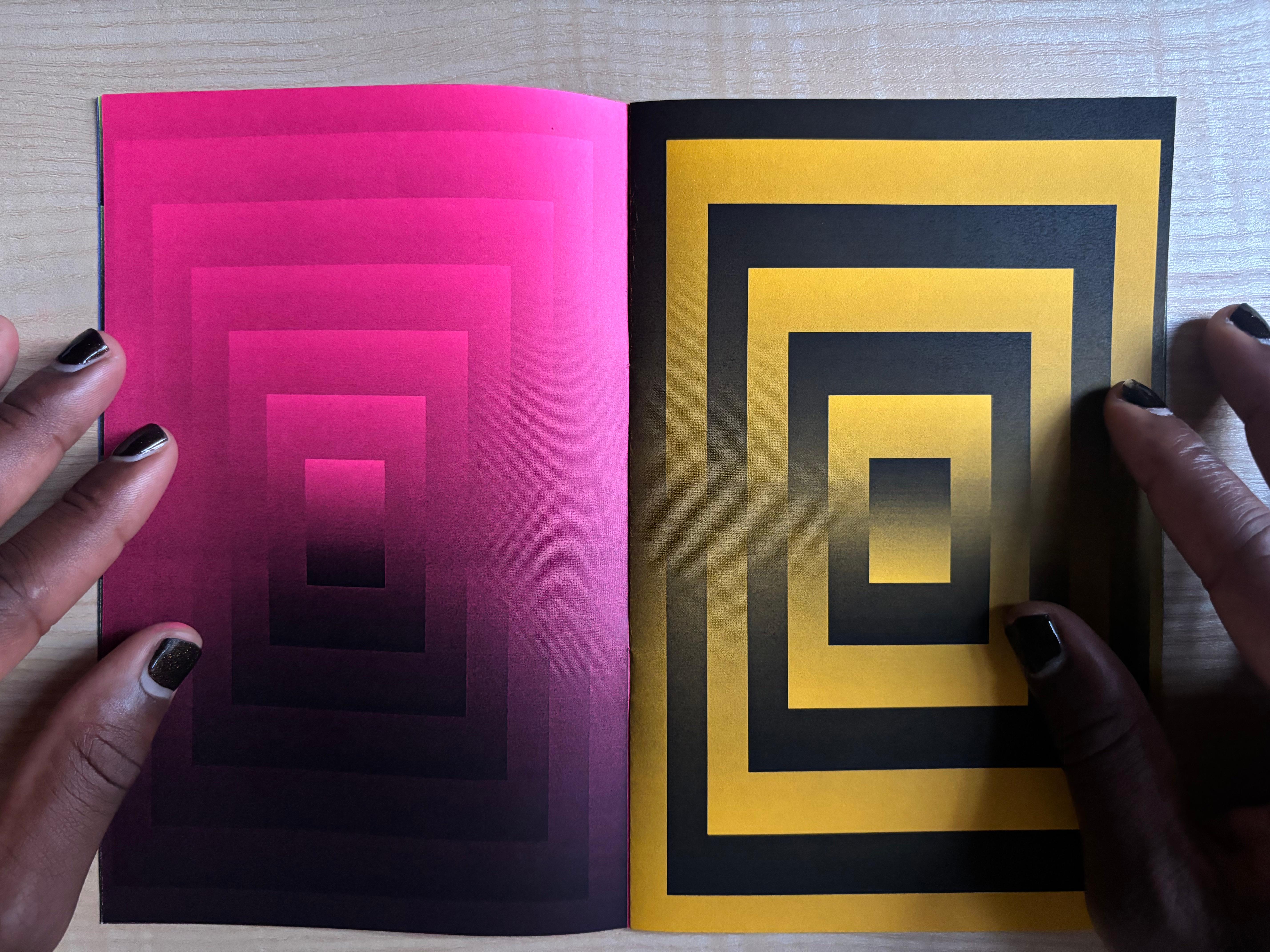
How to Read a Gradient
What is the simplest way to teach a visual system? Inspired by Sol LeWitt's Four Basic Kinds of Lines & Colour, I created an artist book that's one part art and one part instruction manual. Each spread pairs a gradient with its transformation, teaching readers to recognize patterns and understand the underlying logic through repetition and variation.

Chroma Steps
Chroma Steps is a series of prints exploring the space between colors. Each Risograph print uses the machine's unique screen printing process to investigate color and movement through interpolation. Colors march across the page in harmony, changing into and away from one another.

Block Icons
For Block, we designed a small generative algorithm that creates unique iconography while maintaining the brand's distinctive visual language. Starting with hand-drawn illustrations, the algorithm applies Block's signature colors and shapes to each item. Rather than designing hundreds of individual stickers, the algorithm produces variations that all carry Block's core motifs of vibrant color, dynamic movement, and bold geometric shapes. Read more about the design of the icon system here.
Collaborators: Angie Garland, Chloe Stokes
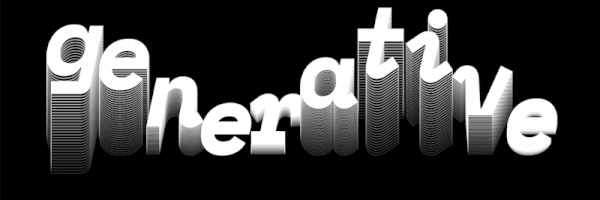
Echo
Echo is a design algorithm using rhythm and repetition to create kinetic typography pieces. The algorithm transforms static type into dynamic visual experiences that pulse and flow across digital canvases. Echo serves as a recurring motif throughout my portfolio, appearing across various graphic design assets from workshop materials to presentations.